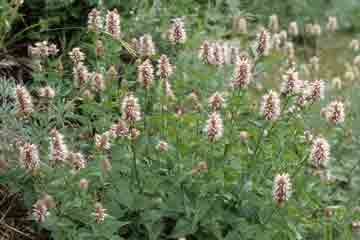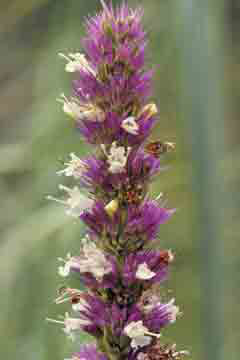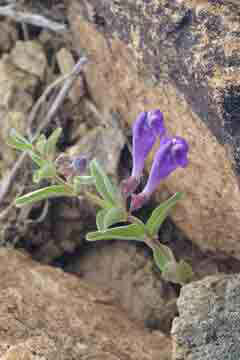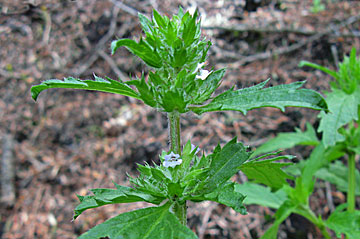Home | Next |
Previous | Index |
Purchase book
Idaho Mountain Wildflowers
Mint Family, Lamiaceae
The Mint Family, Lamiaceae (an older family name, Labiatae, is also
correct) consists of approximately 265 genera and 6,000 species. Its members
typically have square stems and many produce volatile oils responsible for
their “minty” odor. Characteristically, the flowers are borne in
whorls (“verticillasters”) above paired, usually toothed leaves.
The flowers are irregular with five petals, two of which form an upper
“lip”—explaining the older family name (labiatus means
“lip-shaped” in Latin). While not all species share the above
characteristics, there usually is little problem in identifying members of
the family. It includes ornamental garden plants (Salvia, bee-balms
[Monarda], and others) as well as many useful herbs: garden mints
(Mentha spp.) such as peppermint, spearmint, catnip, etc., lavender
(Lavendula), various garden sages (Salvia spp.), as well as
other culinary herbs including species of thyme (Thymus), oregano
and marjoram (Oreganum), basil (Ocimum), rosemary
(Rosemarinum), California’s yerba buena (Satureja douglasii
Benth.), and the list goes on. About two dozen genera grow in the Northwest,
most at lower elevations including the fragrant native field mint, Mentha
arvense L., often found growing in moist places.
 |
Western horsemint, Agastache urticifolia
(Benth.) Kuntze (left, right). The western horsemint
(or giant hyssop, a preferred name) grows in great numbers along our mountain
trails, especially where the soil retains moisture from the snowmelt. It
occurs as high as the subalpine zone. The tall, square-stemmed plants
have a pronounced minty odor. Agastache, derived from two Greek words,
implies “a spike of wheat” reflecting the form of the flowerhead.
The species name, urticifolia, means “nettle-leaved” for
the resemblance of the plant’s leaves to those of the common stinging
nettle (Urtica dioica L.). |
 |
 |
Snapdragon skullcap, Scutellaria
antirrhinoides
Benth. (left). The skullcaps are so named for the
shape of the calyx which is fancied to resemble a visored helmet in some
species. Similarly, their calyces have a bump that bears a fanciful
resemblance to a tray (scutella). The name antirrhinoides means
"snapdragon-like" for its resemblance to that flower (otherwise the two plants
are unrelated). Although scutellaria do not have a minty odor, the irregular,
bilaterally symmetrical flower and square stems are tip-offs that they are
in the mint family.
Dragonhead, Dracocephalum parviflorum
Nutt. (right). The dragon head may be identified by
its coarsely toothed leaves (some of which may be quite large), a large square
stem and congested flowerheads made up of small (+/- 1/4"), two-lipped,
blueish-white flowers. Dragonheads are found in most of the northern states
and in all of the Canadian provinces |
 |
Home | Next |
Previous | Index |
Purchase book



